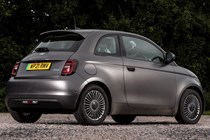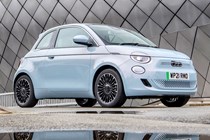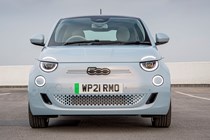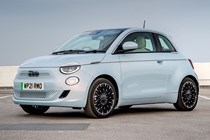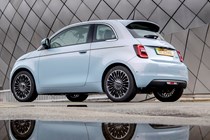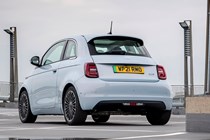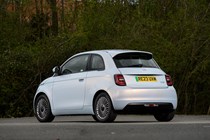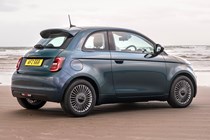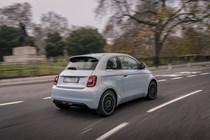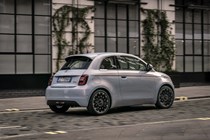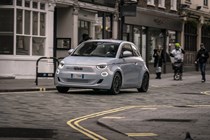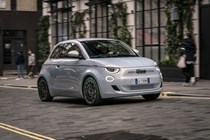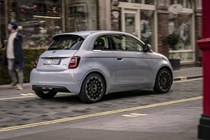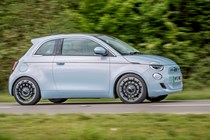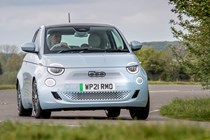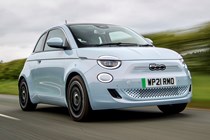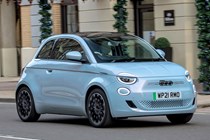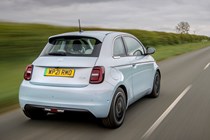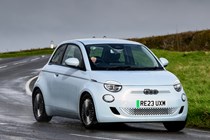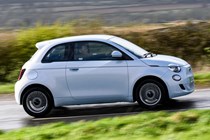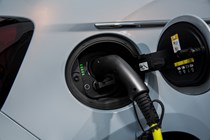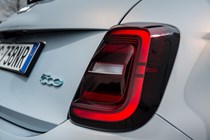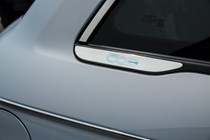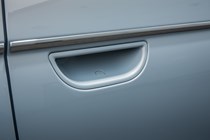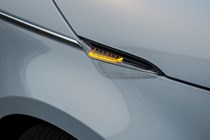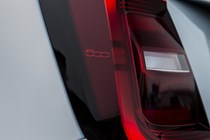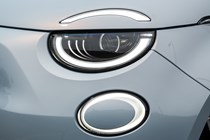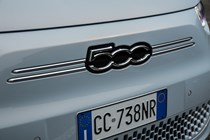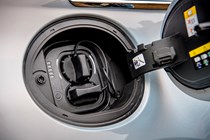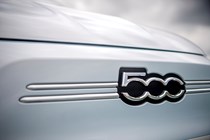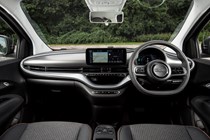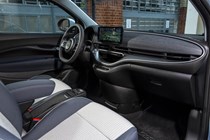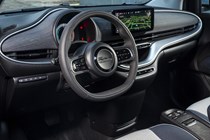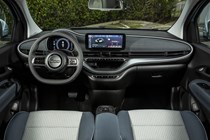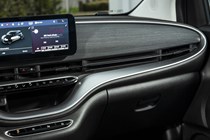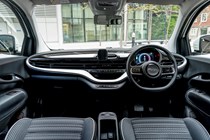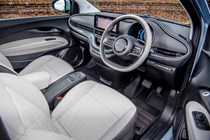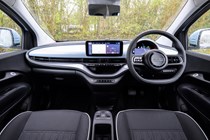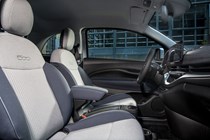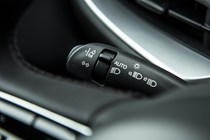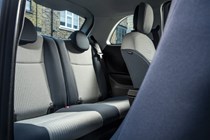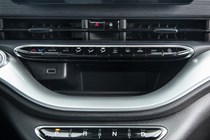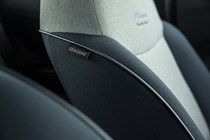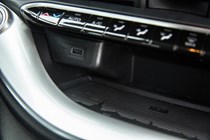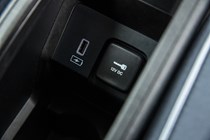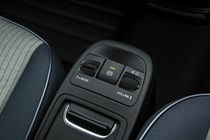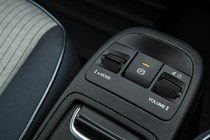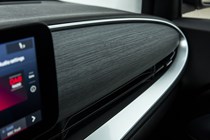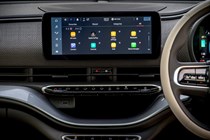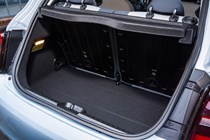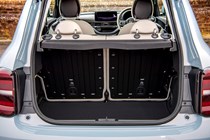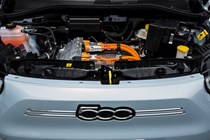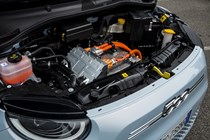
Fiat 500 Electric running costs and reliability
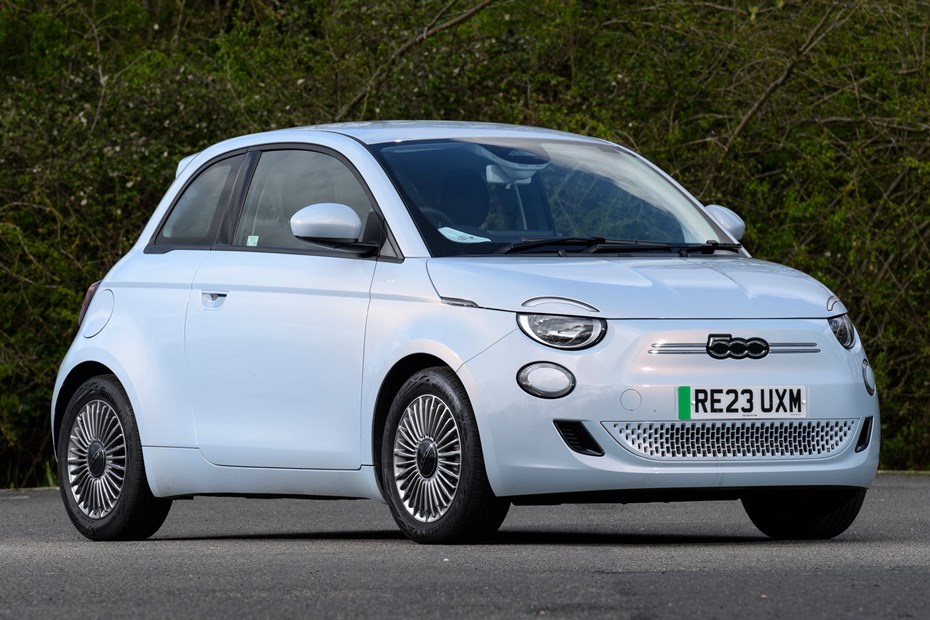
Miles per pound (mpp) ⓘ
| Electric motors, home charging | 12.6 - 14.1 mpp |
|---|---|
| Electric motors, public charging | 6.8 - 7.6 mpp |
Fuel economy ⓘ
| Electric motors | 4.3 - 4.8 miles/kWh |
|---|
- Electric power means no road tax
- Well-sized battery
- Great range for a small EV
How much is it going to cost to run?
As an electric car, the Fiat 500 promises rock-bottom running costs. For starters, there’s the obvious – charging up on the mains is currently a lot cheaper than running a car on petrol or diesel. If you top up at a home charger using cheap overnight electricity, a full charge will not cost much at all.
Range and charging
There are two versions to choose from, details below:
- 70kW 93hp have an official WLTP driving range of 118 miles (Combined).
- 87kW 118hp have an official WLTP driving range of 199 miles (Combined).
In the real world you can knock a fair few miles off of those totals. Expect less than a 100 miles of range from the 93hp version and around 140 from the 118hp model.
Public charging – which the 500 can handle at rates of up to 85kW thanks to its powerful on-board electrics – will obviously cost more depending on where you opt to top up. Fiat reckons a charge from 10-80% will take around 30 minutes using one of these.
Home charge times aren’t as arduous as some larger cars thanks to the 500’s relatively compact battery. The larger, 42kWh battery will charge from a three-pin plug socket in 15 hours or four hours and 15 minutes from an 11kW wallbox. Fiat hasn’t published a charging time for the more popular 7kW wallboxes, but with a little maths and fudgery we’d estimate it to take around nine hours.
Those numbers are all for a full charge from 0% – but very few people flatten their batteries completely every night. To put it simply, charging times are unlikely to be a big problem for the Fiat 500. As an electric car, road tax is free, and company car drivers have the potential to save thousands of pounds in Benefit-in-Kind tax compared to a petrol supermini.
Servicing and maintenance
Servicing intervals are once a year or every 12,000 miles. It should be cheaper to service than a conventional car, and there are a number of service plans to assist with running costs by paying upfront.
It comes with a three-year/unlimited-mileage warranty, and Fiat also covers the 500 Electric’s battery for eight years or 100,000 miles, whichever comes sooner.
Reliability
- Difficult to make a judgement yet
- Electric cars tend to be reliable
- Fiat’s record still not great
It wouldn’t be fair to make a judgement on the Fiat 500’s reliability before the model’s even on sale in the UK, but historically one would have to approach it with a little bit of caution. Fiat’s reputation for reliability isn’t the best, and the old 500 was subject to a large number of recalls over its life – 14 of them in the last two years alone.
But, it’s important to give Fiat the benefit of the doubt here. The new 500 shares very few components with its predecessor, being based on a totally new platform. Electric vehicles are typically very reliable thanks to their lack of moving parts, and the new 500’s build quality does appear to be a significant improvement over the car it replaces.
Ongoing running costs
| Road tax | £195 |
|---|---|
| Insurance group | 15 - 19 |
Get an insurance quote with

|
|



